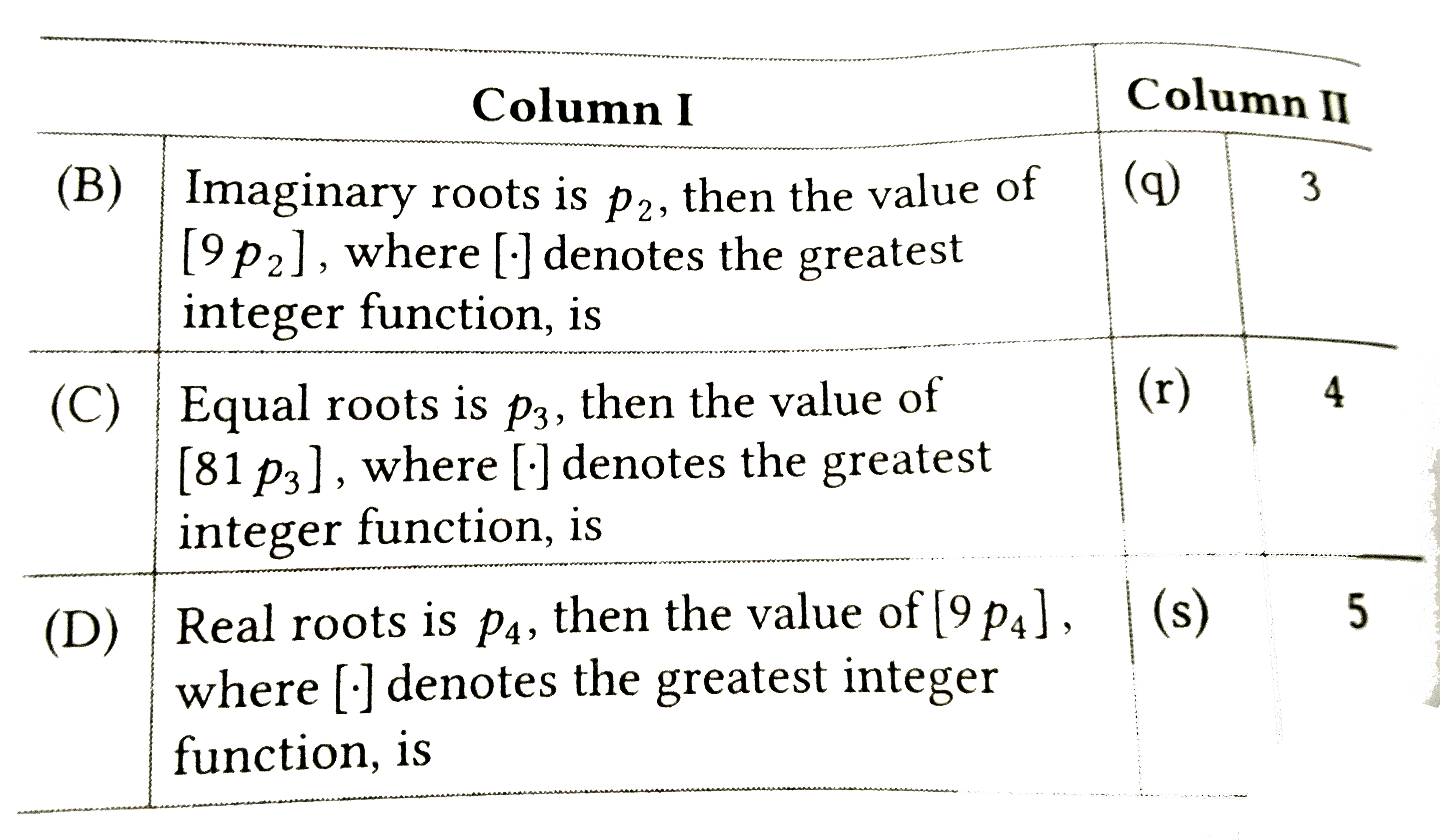If a and b are chosen randomly from the set consisting of number 1, 2, 3, 4, 5, 6 with replacement. Then the probability that limx→0[(ax+bx)/2]2/x=6 is
1/3
1/4
1/9
2/9
The correct Answer is:C
To solve the problem, we need to determine the probability that
limx→0(ax+bx2)2x=6
where a and b are chosen randomly from the set \{1, 2, 3, 4, 5, 6\} with replacement.
Step 1: Analyze the limit expression
We start with the limit:
limx→0(ax+bx2)2x
As x approaches 0, both ax and bx approach 1. Thus, we can rewrite the limit in a more manageable form:
limx→0(1+12)2x=limx→012x=1
However, we need to explore the expression further to find the conditions under which the limit equals 6.
Step 2: Rewrite the limit using logarithms
Let:
y=limx→0(ax+bx2)2x
Taking the natural logarithm of both sides, we have:
lny=limx→02xln(ax+bx2)
Step 3: Apply L'Hôpital's Rule
To evaluate this limit, we rewrite it as:
lny=limx→02ln(ax+bx2)x
This is of the form 00, so we can apply L'Hôpital's Rule:
lny=limx→02⋅ddx(ln(ax+bx2))1
Calculating the derivative:
ddx(ln(ax+bx2))=axlna+bxlnbax+bx
Step 4: Evaluate the limit
Now substituting back into the limit:
lny=2⋅limx→0axlna+bxlnbax+bx
As x approaches 0, ax and bx both approach 1, hence:
lny=2⋅lna+lnb2=ln(ab)
Thus, we have:
y=ab
Step 5: Set the condition for the limit
We want:
ab=6
Step 6: Find favorable outcomes
Now we need to find the pairs (a,b) such that ab=6. The pairs that satisfy this condition from the set \{1, 2, 3, 4, 5, 6\} are:
1. (1, 6)
2. (2, 3)
3. (3, 2)
4. (6, 1)
Thus, there are 4 favorable outcomes.
Step 7: Calculate total outcomes
Since a and b are chosen with replacement from 6 options, the total number of outcomes is:
6×6=36
Step 8: Calculate the probability
The probability P that ab=6 is given by:
P=Number of favorable outcomesTotal outcomes=436=19
Final Answer
Thus, the probability that
limx→0(ax+bx2)2x=6
is
19
2. (2, 3)
3. (3, 2)
4. (6, 1)
Topper's Solved these Questions
- BOOK - CENGAGE ENGLISHCHAPTER - PROBABILITY I EXERCISE - Comprehension14videos
PROBABILITY I
- BOOK - CENGAGE ENGLISHCHAPTER - PROBABILITY I EXERCISE - Match2videos
PROBABILITY I
- BOOK - CENGAGE ENGLISHCHAPTER - PROBABILITY I EXERCISE - Exercise 9.37videos
PROBABILITY I
- BOOK - CENGAGE ENGLISHCHAPTER - PROBABILITYEXERCISE - Comprehension2videos
PROBABILITY
- BOOK - CENGAGE ENGLISHCHAPTER - PROBABILITY IIEXERCISE - MULTIPLE CORRECT ANSWER TYPE6videos
PROBABILITY II
Similar Questions
Two numbers a and b are chosen at random from the set {1,2,3,4,...,0} with replacement. The probability that the equation x2+√2(a−b)x+b=0 has

 View Solution
View SolutionIf pandq are chosen randomly from the set {1,2,3,4,5,6,7,8,9,10} with replacement, determine the probability that the roots of the equation x2+px+q=0 are real.
View Solution
Knowledge Check
- Question 1 - Select One
limx→1x2−6x+5x2+3x−4=
A−1.25B−0.80C0.80D1.25
If pandq are chosen randomly from the set {1,2,3,4,5,6,7,8,9,10} with replacement, determine the probability that the roots of the equation x2+px+q=0 are real.
View Solutionlimx→0(2x−3)(3x−4)(4x−5)(5x−6)
View SolutionIf a number x is chosen at random from the numbers −2, −1, 0, 1, 2 . What is the probability that x2<2 ?
View SolutionIf a number x is chosen at random from the number −2,−1,0,1,2. What is the probability that x2<2?
View Solutionlimx→0(5x2+13x2+1)1/x2
View SolutionTwo numbers are selected randomly from the set S={1,2,3,4,5,6} without replacement one by one. The probability that minimum of the two numbers is less than 4 is (a) 115 (b) 1415 (c) 15 (d) 45
View SolutionTwo numbers are selected randomly from the set S={1,2,3,4,5,6} without replacement one by one. The probability that minimum of the two numbers is less than 4 is (a) 115 (b) 1415 (c) 15 (d) 45
View Solution

